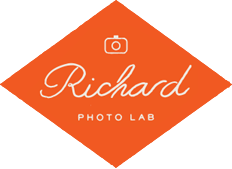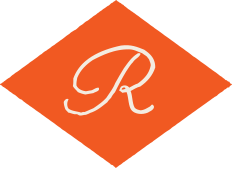A guest post by photographer Johnny Patience.

I have always been attracted to seemingly mundane scenes and finding beauty & poetry in everyday life. I usually don’t plan ahead for my work—what interests me most in photography is responding to the world around me. I have often thought about how I could combine my love for fine art, travel, and street photography into a personal, long-term photography project.
So in November 2015, when I moved from Europe to the United States, I began my 365 project. I documented the first year in my new home with one picture of my life per day. I knew I wouldn't get to pick and choose how my days looked, and very often they were dull and uneventful and I wasn’t able to make a decent photograph that would be worth anything to anyone but myself. But that wasn’t what this project was about—I wanted it to be a true record of my life. To capture real moments and make memories, to tell about the good and the bad times. To photograph how it feels to move continents and to get comfortable in a different culture, document my feelings along the way, my personal experiences, making friends, love and life.

I shoot film exclusively, and I work with a minimalist approach to gear: one camera, one lens, and natural light. I spent a lot of time trying to decide how exactly to approach this challenge technically. Should I shoot the project on medium format or 35mm film? Should I use color, black & white, or both? Would shooting my beloved Hasselblad even be an option with the weight and size of the camera, and only allowing for 12 frames per roll?

After what felt like weeks of consideration, I settled for shooting the project with my Leica M, a 50mm lens, and Tri-X black & white film. The reasons were simple: I needed a camera that’s very reliable, portable, and fairly quick. I also wanted to be able to get through a day without having to change rolls. I decided for B&W film because I knew I would be shooting day in, day out throughout an entire year—through rainy and sunny days, and through all four seasons.

I think B&W relates to reading a book like color relates to watching a movie. Both are wonderful in their own way, but when you are reading a book you imagine part of the story. That's the same with B&W film, it's imaginative and suggestive. The viewer connects to the story and becomes part of it. With color, your mind doesn't need to fill in the blanks because everything is already there.
I love shooting color, too, and there is a lot that you can do with color that wouldn't work with B&W. But I think it's important to make a conscious decision about what to use for which situation. If you use it right, B&W will never take from your artistic expression. Only add to it.

To me, Kodak Tri-X is the most beautiful B&W film there is—and it’s also the most versatile and forgiving. Shooting B&W ended up being a wonderful choice, and it helped a lot in pulling all of the very diverse shooting conditions together and giving the project a cohesive look. Besides caving for a few days during the summer, where I switched to color film because I got carried away by the mood, I stuck to my choice the whole time. Looking back on the project now, a few months after completion, I think that shooting B&W was the best decision I made.

The same is true about my camera. I’m almost surprised that my trusty 50-year-old Leica never let me down! It went through a war in these 12 months, and besides constantly hanging on my shoulder and being bashed around sometimes when I wasn’t paying attention, it survived being snowed on, frozen to a solid block of ice, and forgotten in the car at the beach on a hot summer day.

I decided to journal every day to keep a record of my days, and I did that with pen and paper. To keep track of my pictures, I numbered the rolls I finished and wrote down the frame numbers from each day. To make sure I didn’t confuse where I am in the project when I got my film back, I also made a note about the subject of the first frame I shot each day.
I had a delay between shooting and posting on my blog, since the film needed to be developed and scanned. I decided to use the offset between my move in early November and the beginning of the new year as a buffer, allowing time for shipping my work to Richard Photo Lab for them to process and scan, and sending the negatives back afterwards for me to make darkroom prints.

I usually collected about 10-15 rolls of film and then sent a whole batch off at once. What I shot on my first day in the US on the 6th of November, 2015, was actually published on the 1st of January, 2016. What I shot on the 7th of November was posted on the 2nd of January, and so forth. This system worked great, and it gave me plenty of time to handle the logistics on my part, including transferring what I had written in my journal onto my blog.

I couldn’t have done this project without being able to completely rely on an experienced pro lab with my work. Richard Photo Lab’s reliability and the consistency of the results delivered is unparalleled. I shot a total of 115 rolls of Tri-X during my 365, and every single frame of each individual order came back perfect. Richard got all of the technicalities out of the way for me. I shipped off my film, got a confirmation a couple of days later that my work made it safely to California, downloaded my scans when the order was complete, resized my images, and published them on my blog. That’s it. No plan B needed.

This was one of the most challenging projects I've ever photographed, and there were many days where I wanted to quit. I feel immense gratitude for the people that encouraged me along the way, just by following my journey or being kind. Or in Richard's case, by being so dependable.
What I learned along the way is irreplaceable to me. It felt like 12 years of photographic development compressed into 12 months. I learned how important and rewarding creative long-term commitment can be and that it’s okay to not always see the light at the end of the tunnel when things are hard. I realized how much I hate having to share mediocre work that I don’t like myself, but that it’s important to let others see you fail. I learned that a good photograph is really something that is given to you when everything aligns, more so than being made by you. And I learned how much I really love B&W film.

This project was also an artistic exercise. It was about authenticity for me and about accepting my personal limitations, repetition, and imperfection. All of my photographs during the year just "happened". Nothing was planned in advance. I was able to capture them just because I brought my camera with me everywhere, every single day. And sometimes, because I felt brave enough to ask a complete stranger for their portrait, and I didn't get chased away.

I can only encourage you to consider working on a similar project, especially if you are busy and you think that you don’t have enough time for personal work. Your vision will benefit, and you will learn a lot about your artistic voice. Not every image I took was great, but had I not done this project, the ones I would have missed along the way would have broken my heart.
My 365 project is over and I completed it. But I still carry a camera with me every single day.
Start Your Film Order
